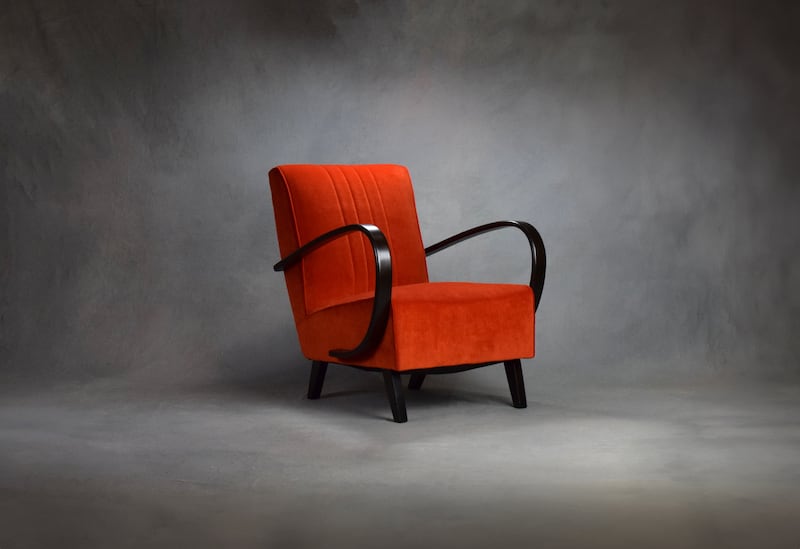The attic is a space you already own, you don’t have to encroach on the garden to get it and unless you’re raising the roof or building out a dormer, it shouldn’t require planning permission.
Raising the roof or adding a dormer is necessary in some attics if tall members of the family want to use it. An attic should have a pitch of 30 degrees to accommodate a good conversion and the angle of the roof will impact on the amount of usable space.
Given the supply side housing constraints when it comes to trading up, it’s little wonder so many homeowners decide the best option is to stay put and convert the attic instead.
The normalisation of remote working post Covid is driving demand too. At onlinetradesmen.ie requests for attic conversion quotes rose 30 per cent after Covid.
While demand has levelled off somewhat, such activity is still up 12 per cent compared to 2019, according to founder Ted Laverty.

Building materials cost inflation has plateaued too, leaving costs up around 25 per cent on what they were pre Covid. Onlinetradesmen.ie data shows the average cost of attic conversions is €34,000 in Dublin and €28,000 in rural areas. If the roof needs to be raised or a dormer added, expect to pay €40,000-plus.
When considering one, get advice from an architect or engineer and make sure the completed work is certified as compliant with applicable building regulations, including fire safety ones. Having such certification will be particularly important if you decide to sell at some stage in the future.
Be aware that you won’t get the use of the whole attic space as judged by the ceiling below it: pipes, water tanks and low roof edges – often given over to storage – all take up space, as does the point of entry of the staircase.
“The typical rule of thumb is that around 60 per cent of attic space is usable,” says Laverty.
Another factor driving demand is the availability of Government retrofit grants. These are for energy efficiency works only but if you are already going to the trouble of having such work done it can be a good time to do additional work too.
Be aware, you cannot advertise a house as having, say, four bedrooms, if it has three bedrooms really plus one in a converted attic, cautions Jillian McGuirk of McGuirk Beggan Property in Dublin’s Terenure.
“Typically people will throw up a stairs in front of the boxroom and put in some Velux windows but don’t have planning permission so it is only certified as storage. Of course, what people use them for is up to them, but as far as insurance is concerned you are not supposed to sleep in them as, in the event of a fire, there is no escape route,” she points out.
McGuirk reckons that a standard attic conversion of this kind, in a three-bed semi, will cost around €25,000 to €30,000, perhaps more.
“But it will only add €15,000 to €20,000 to your home,” she says. “Having that additional usable space will certainly help you to sell the property and you can decide what way you want to make it work for you, but what drives me nuts is where someone advertises a four-bedroomed house when that is not what they have.”
The same goes for the property advertised as “three/four bedrooms”. That will not tally with what is on the title documents, McGuirk points out, which could cause issues for prospective buyers when their bank does a valuation for a mortgage application.
A full conversion is good value if your family gets to enjoy the benefit of all that additional space but do not do it to sell a house
— Jillian McGuirk, McGuirk Beggan Property
“So you are saying one thing and the bank is saying another. In such cases people can come back and revise their offer downwards,” she says.
A full attic conversion which meets all building regs, in effect giving your house an additional storey, will cost between €70,000 to €80,000 “but will still only add €50,000 to €60,000 to the value of your home,” says McGuirk.
“It is good value if your family gets to enjoy the benefit of all that additional space but do not do it to sell a house because you won’t get it back,” she adds.
Attic conversion activity is currently driving demand at The Sofa Factory in Dublin.
“Every time the housing market goes up we see people renovating, converting attics and garages,” says sales executive Orla Mangan.

The company, which is both a factory and a showroom, has been in business for 35 years and sells a range of products, including sofas, armchairs and headboards. It also provides a covering service, so that people can refresh existing pieces.

Because height is at a premium in a converted attic, the most popular headboards for them are low and wide, sometimes running the entire width of the room, which can look very dramatic.
“We are also seeing a lot of attic conversions for a home office into which people put a sofa bed so that you have your home office but if you have someone staying you have a spare bedroom as well,” says Mangan.
“For many people an attic conversion is a place for kids to play or a space for a den with a big TV, some sofas and a sofa bed.”
Be careful about the fabrics you choose; if the furniture is directly exposed to a roof light, opting for paler colours means sun-fade isn’t so obvious.
The Sofa Factory does a strong line in mid-century vintage chairs, sourced in Czechia and Germany, which are great for attics.
“Because it’s an attic, space is at a premium,” says Mangan. “People don’t want full armchairs up there as they are 90cms wide. These vintage chairs have open wooden arms, a look that suits an attic, and are just 65cms wide. They make a huge difference space-wise, while still being really comfortable.”
One of the biggest challenges facing those converting their attic is what to do with all the items previously stored there.
“When people are extending their house, whether converting attics or garages, they are removing the traditional storage space of the house,” says Brian Hefferon, managing director of Nesta Dublin Self Storage.
“Sometimes people just need a bit of head space before they deal with the stuff they have accumulated over time but are under pressure and need to get it out of the house before the builders come,” he says.
It’s a situation he knows only too well, having completed an attic conversion of his own two years ago.
“It was a 1962 bungalow with a huge attic space and we got two big bedrooms out of it. It has transformed the house,” says Hefferon.
“We did a full deep retrofit at the same time as extending the attic, putting in a heat pump, underfloor heating, insulation – all of it. We were very lucky with our roof in that it was a huge space up there, pretty much the same footprint as downstairs, and we put in under-eave storage.”
The biggest challenge was the position of the stairs.
“Luckily when these houses were being built they seemed to take conversions into consideration because it was wide enough to house a staircase and still have ample room,” says Hefferon.
Having lived in a bungalow and apartments before developing his now two storey home, he knows exactly how much emotional attachment we have to the items in our attic, whether it is, as in his case, his children’s first shoes, or his customers looking for a place to stow seasonal gear such as skis or surf boards.
If you’re looking at converting the attic to gain additional space, “it’s worth remembering that you can sometimes get the additional space you want by just having a clear-out – and save yourself a fortune in the process,” he points out.
On the other hand, some benefits of an attic conversion are priceless.
“It really is lovely to go upstairs to bed,” he says.















